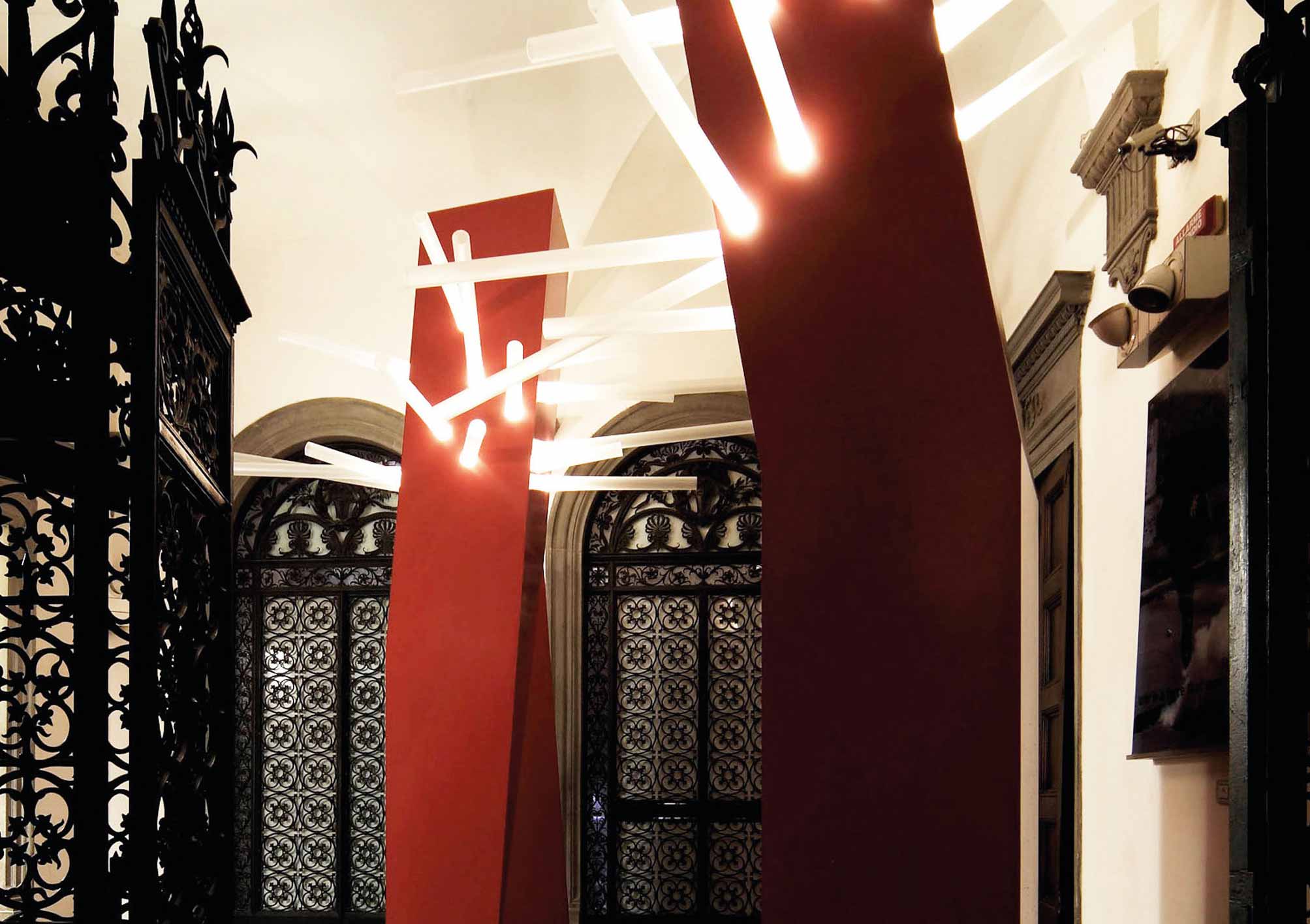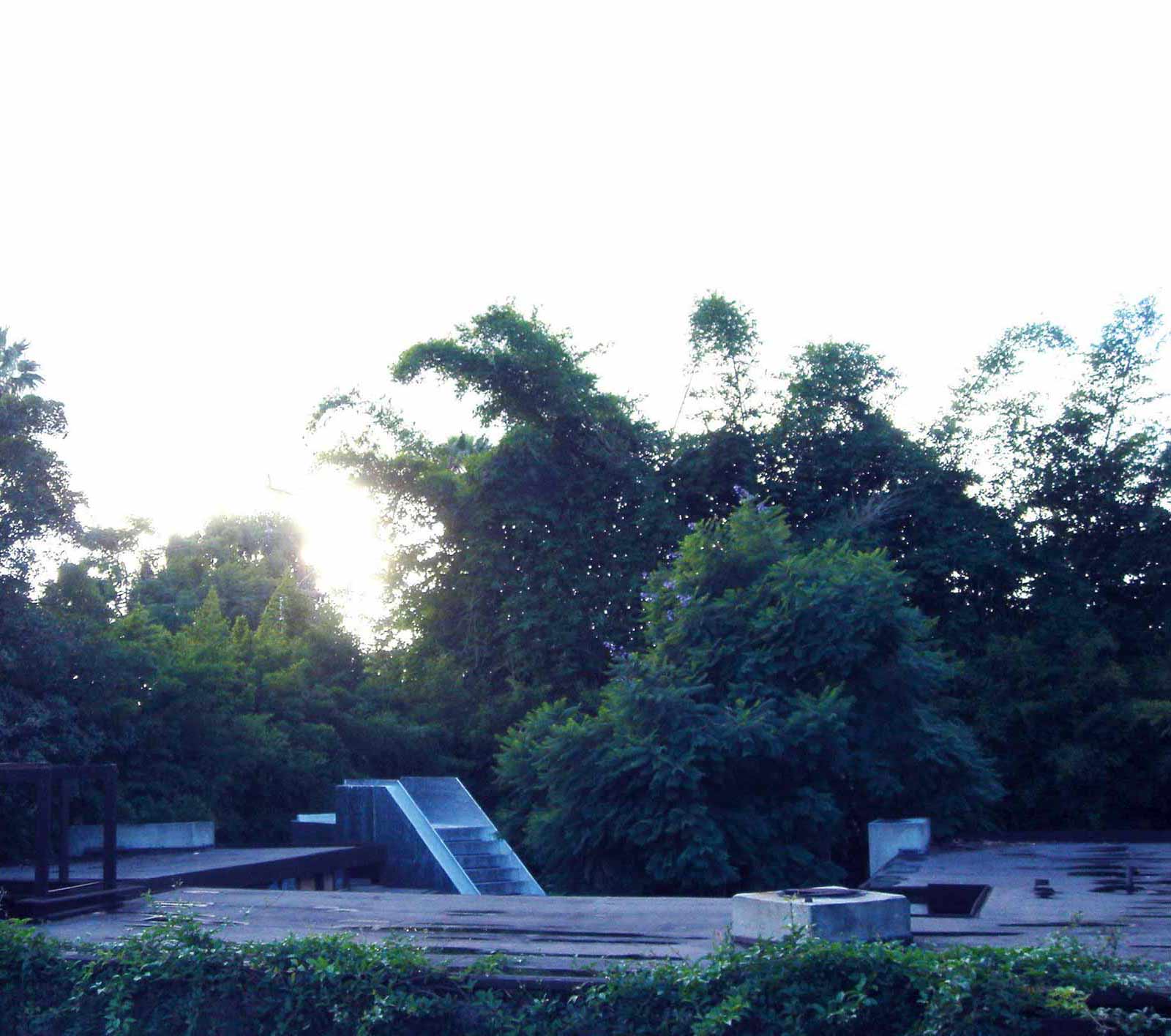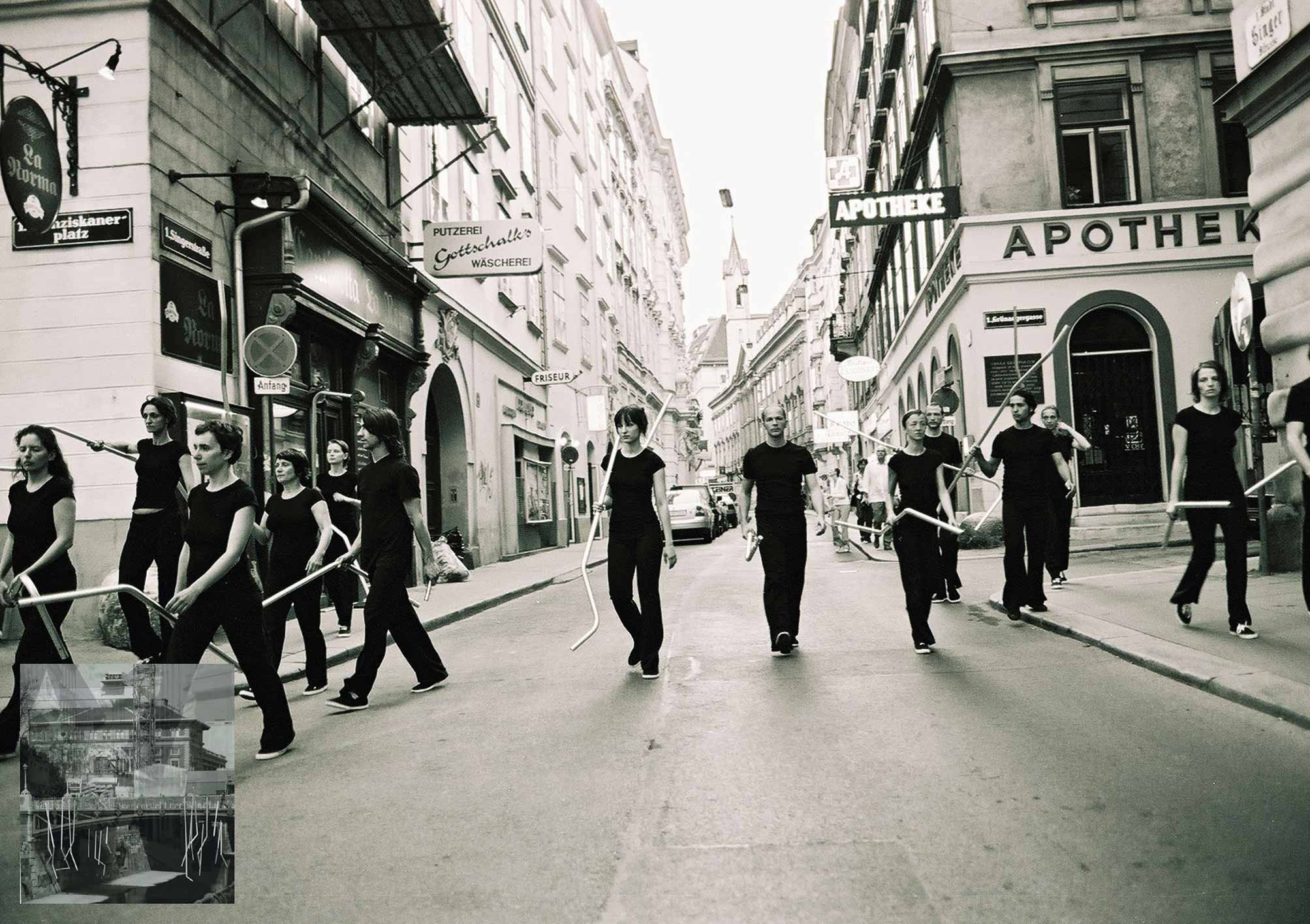
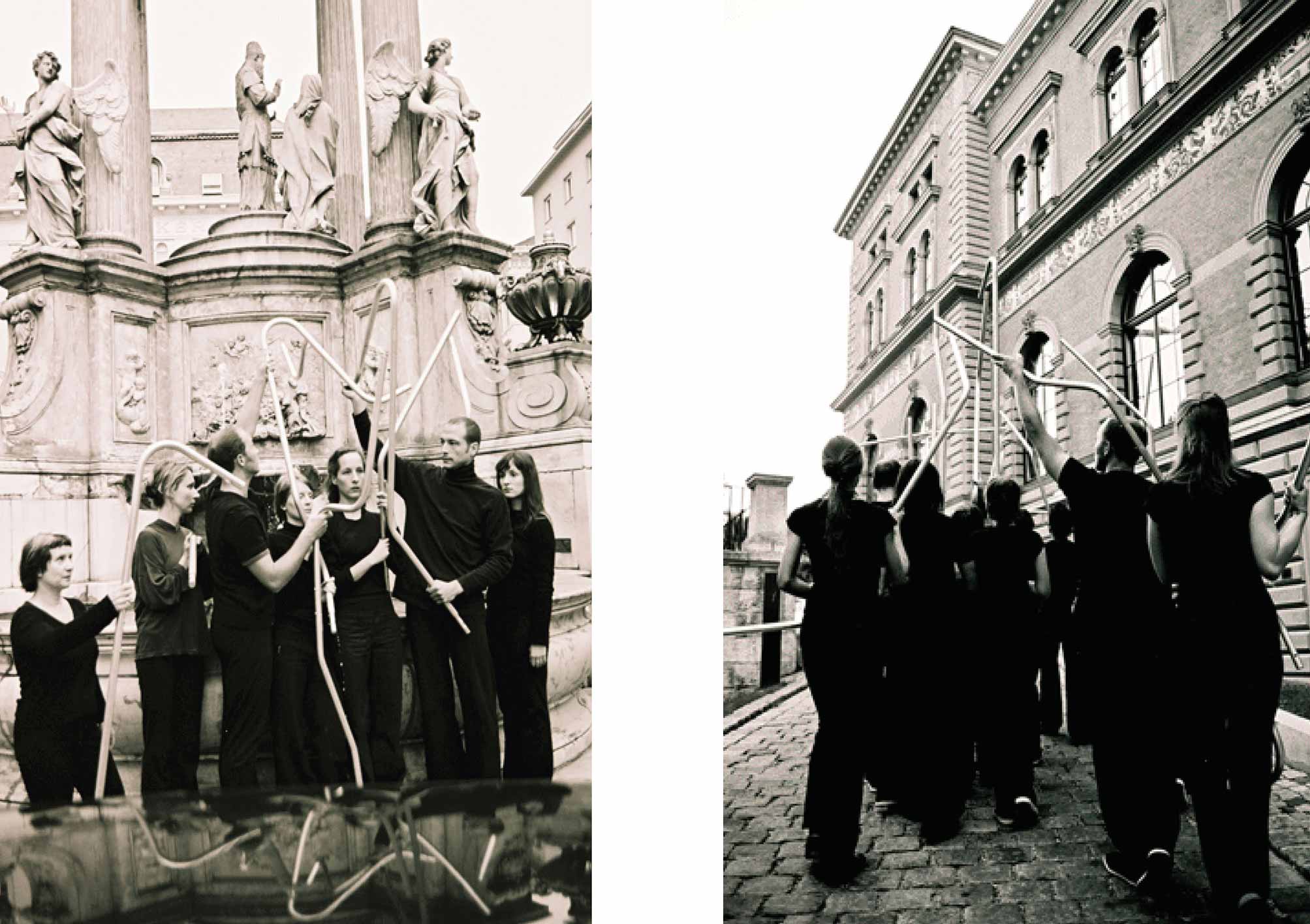
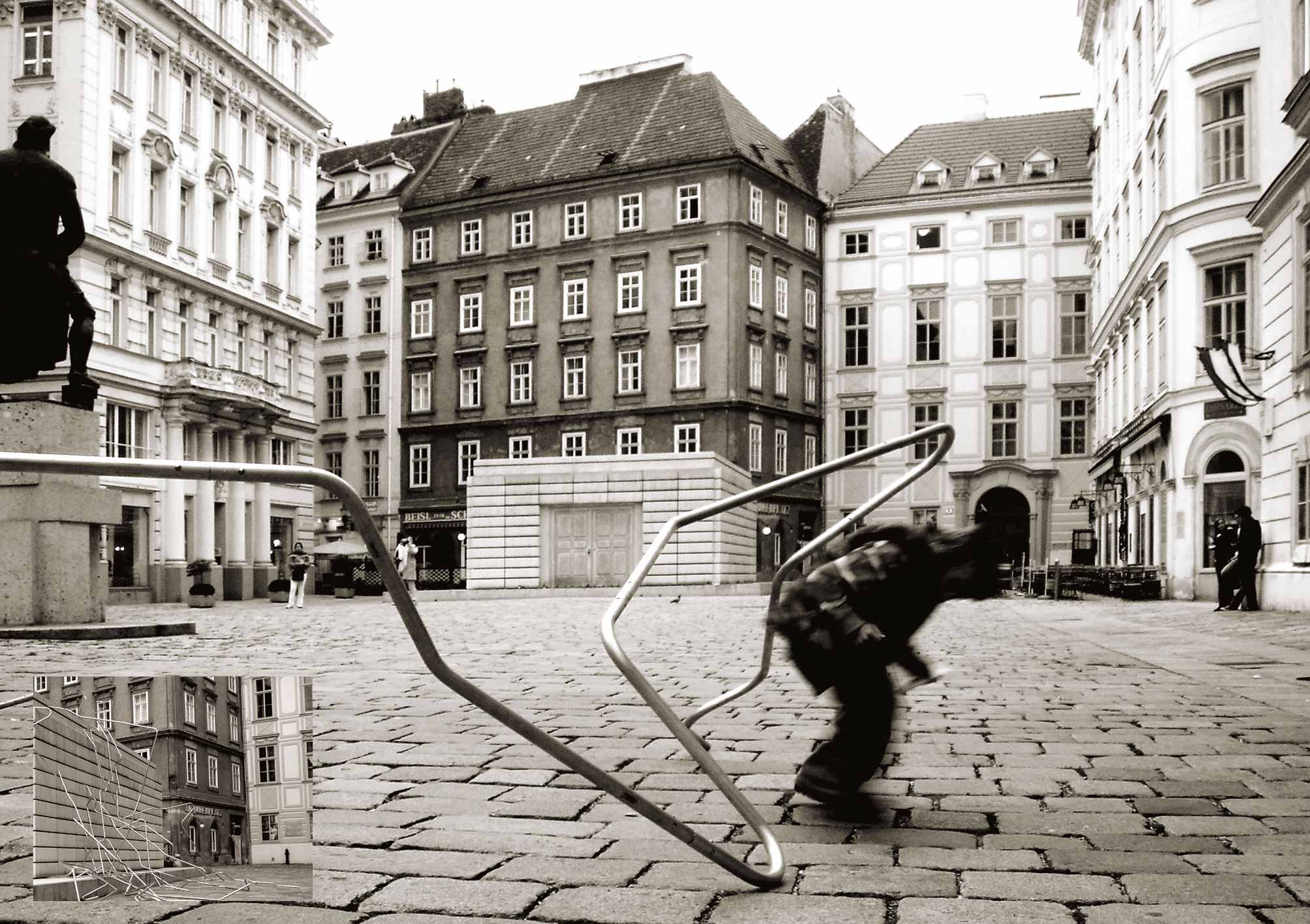
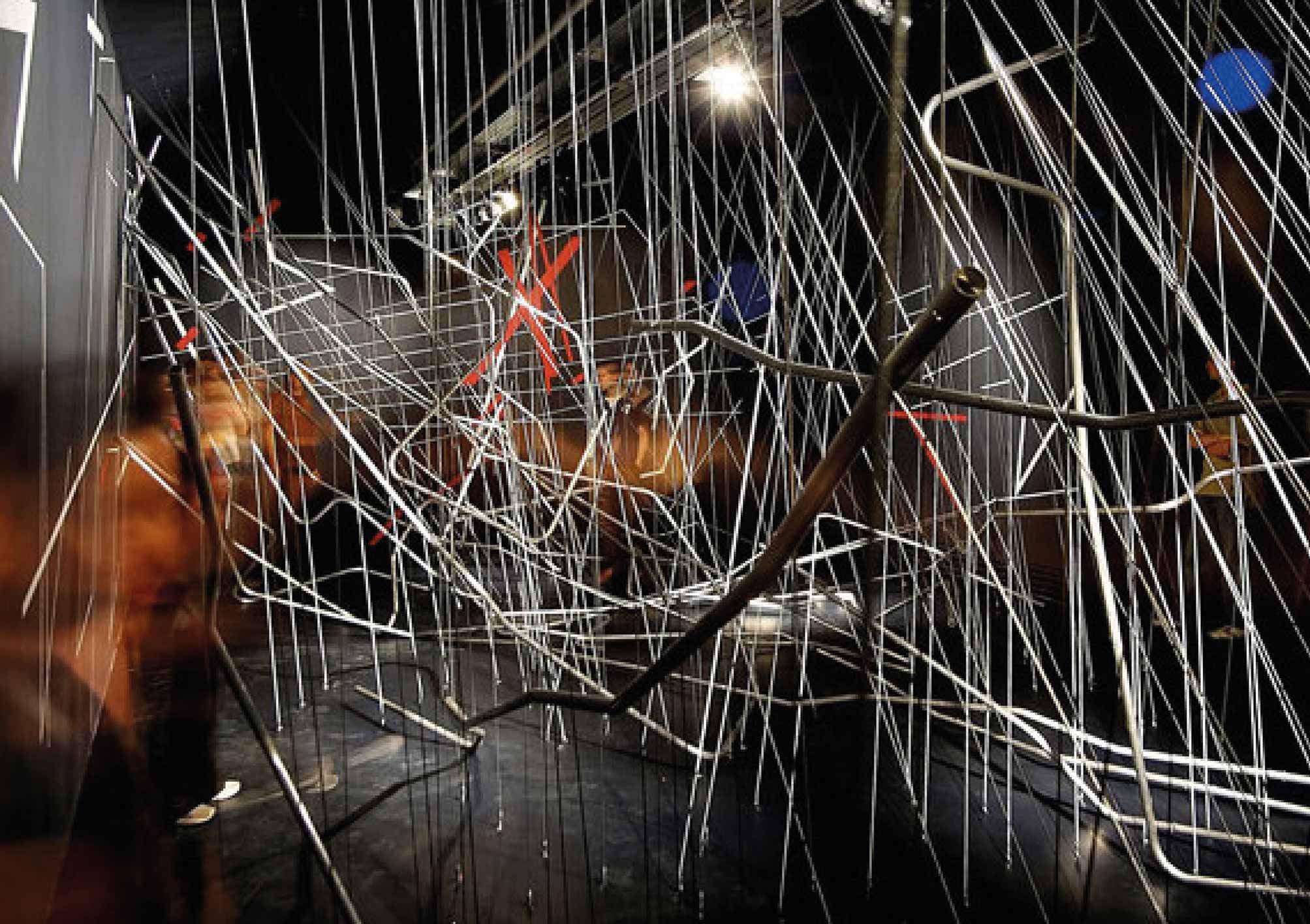
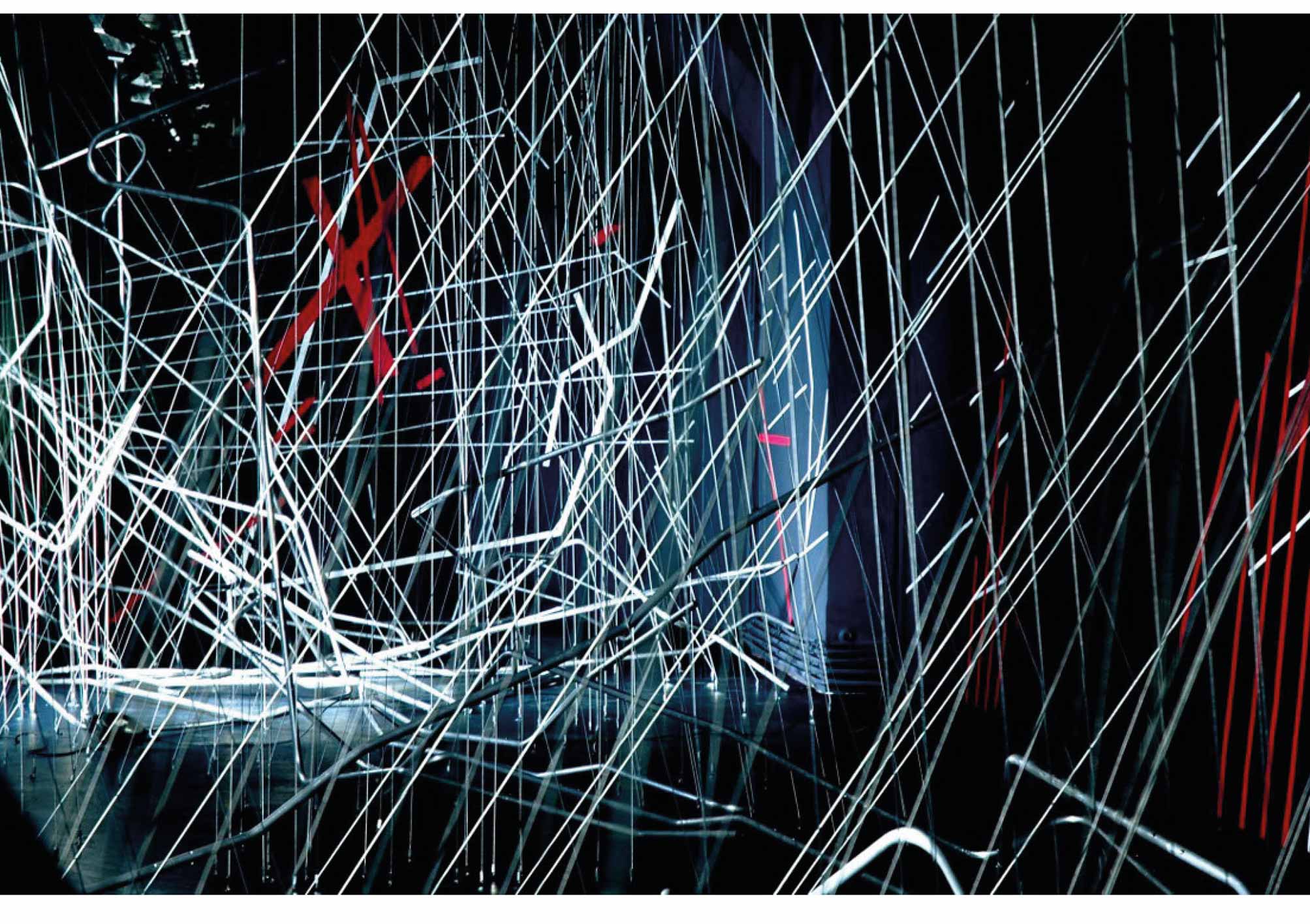


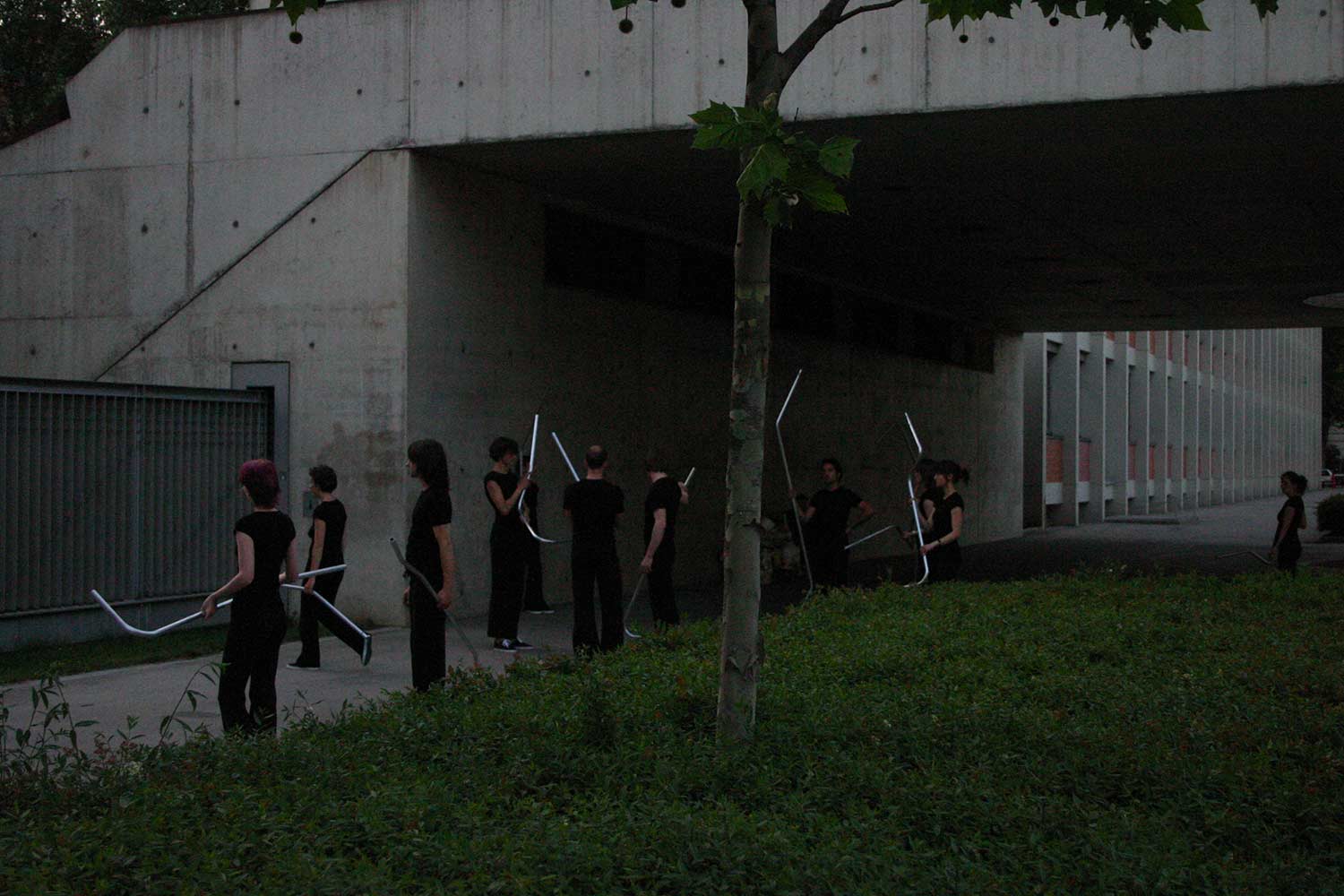





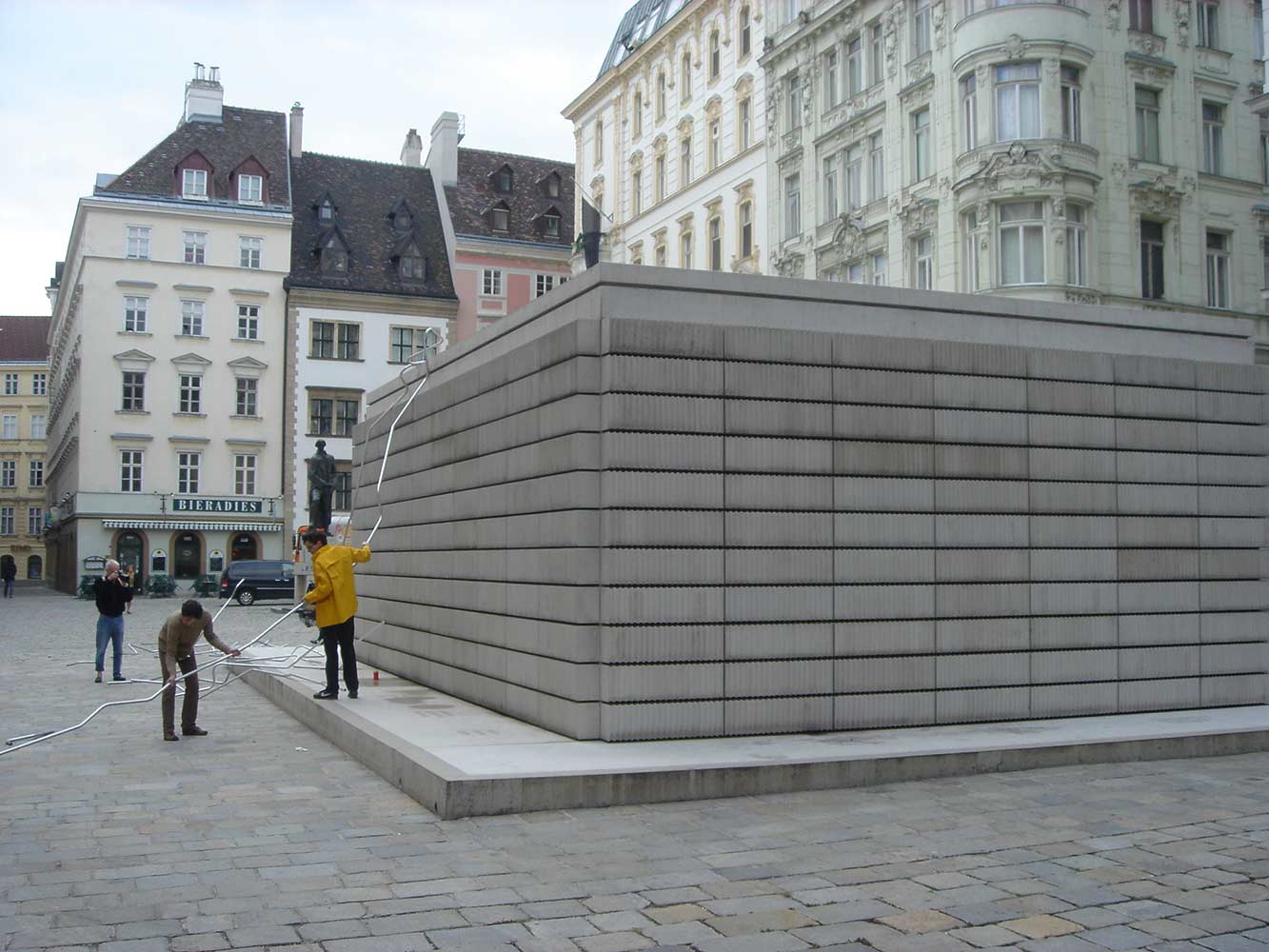

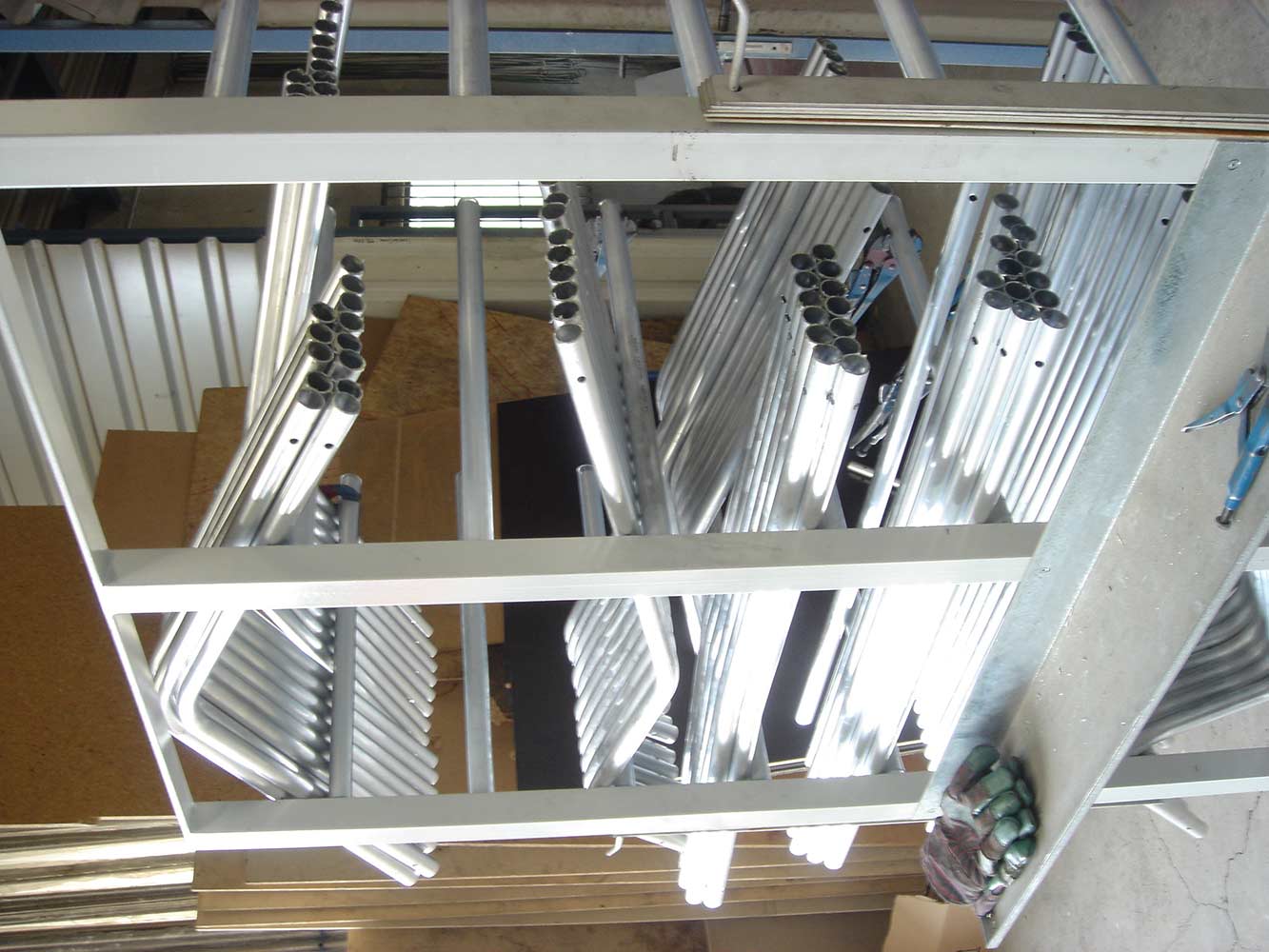
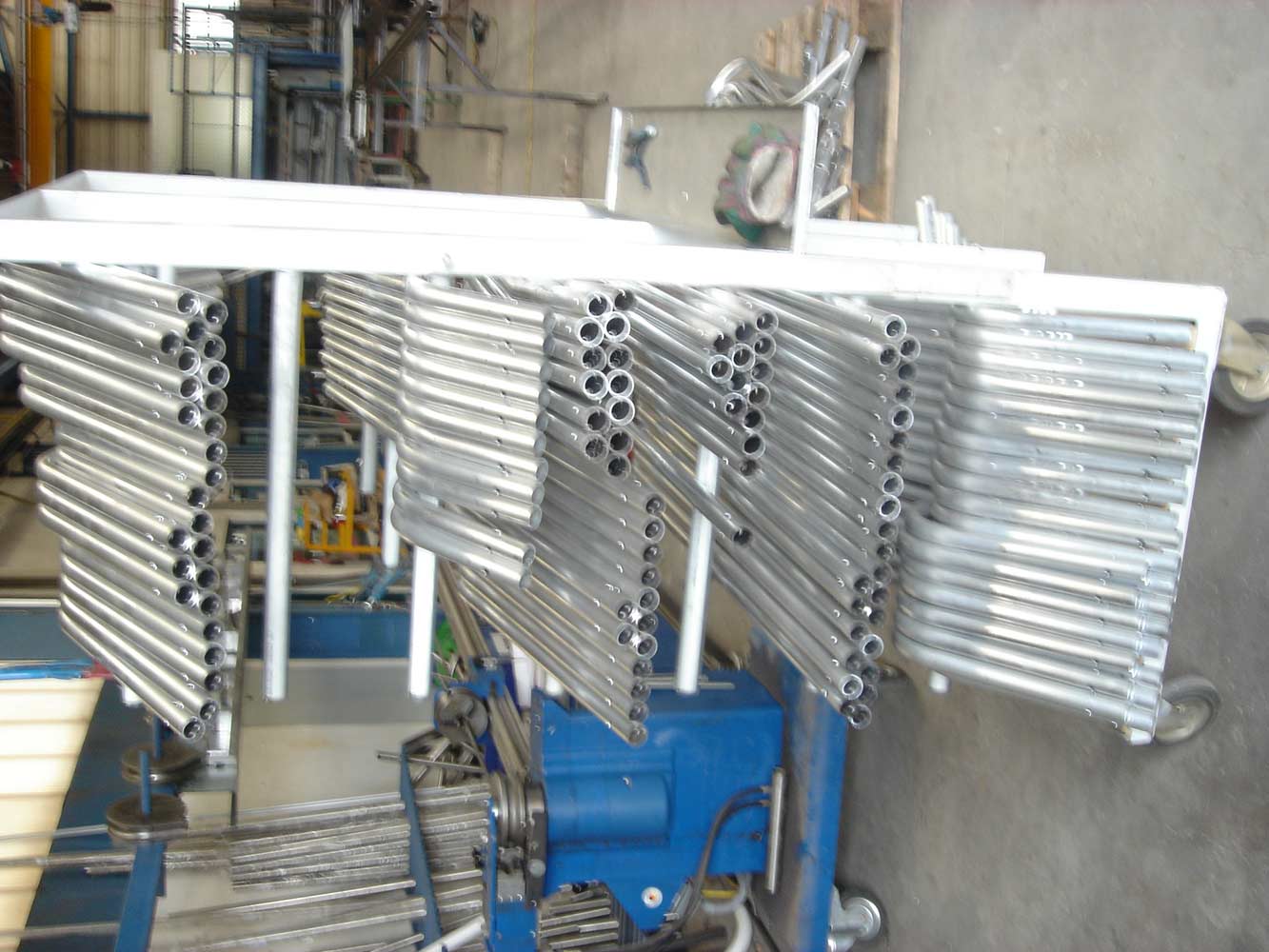
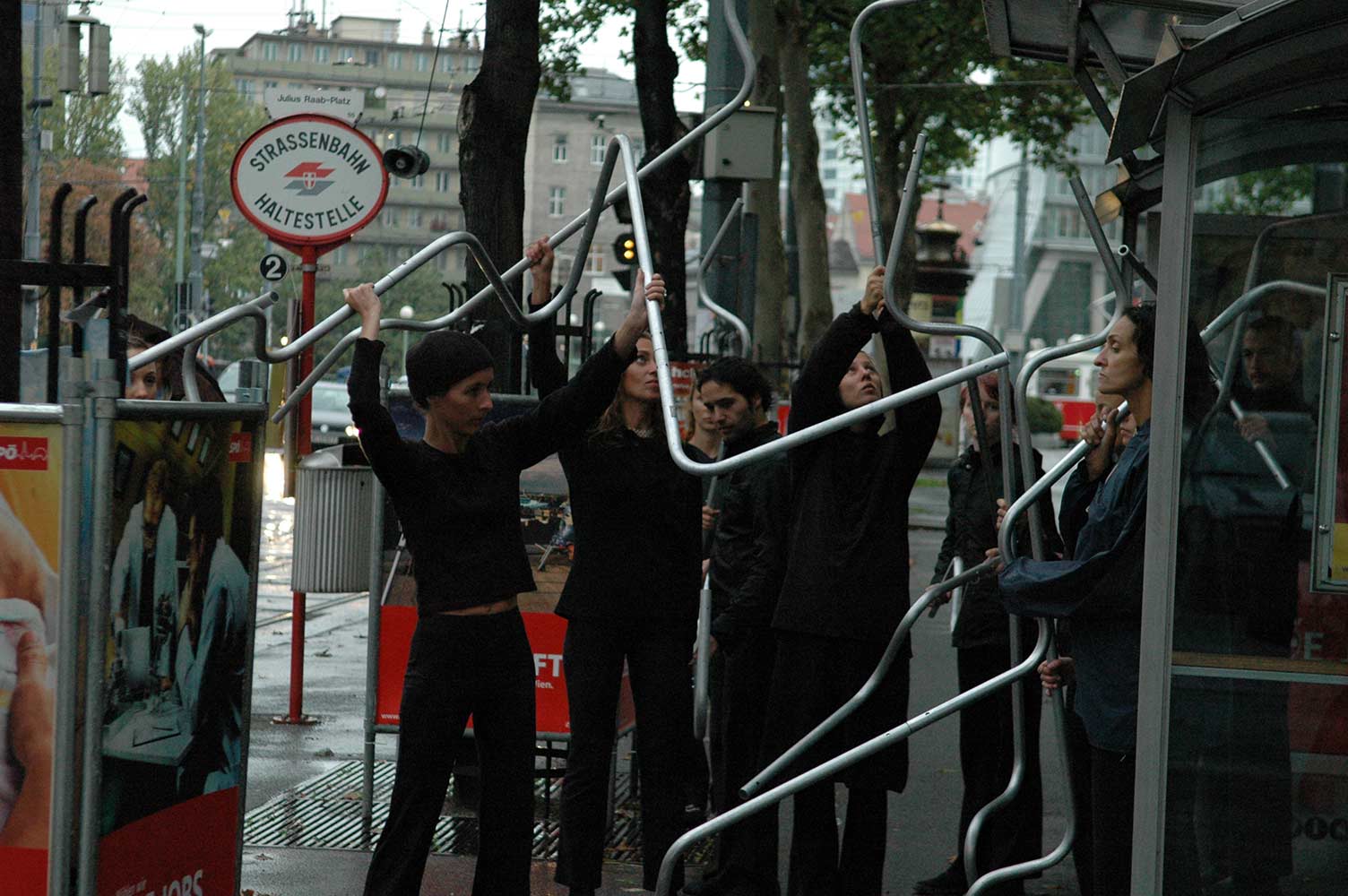

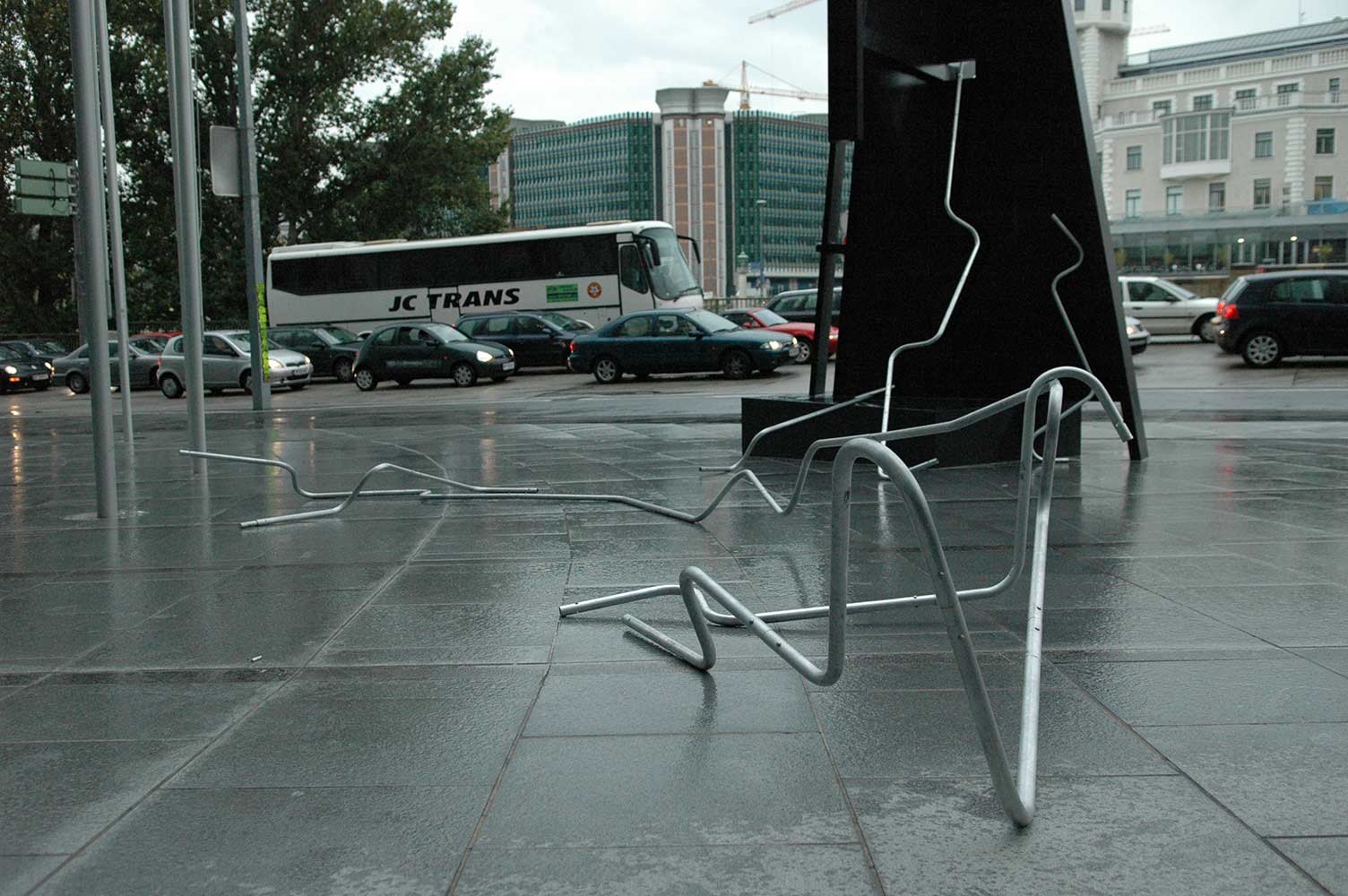

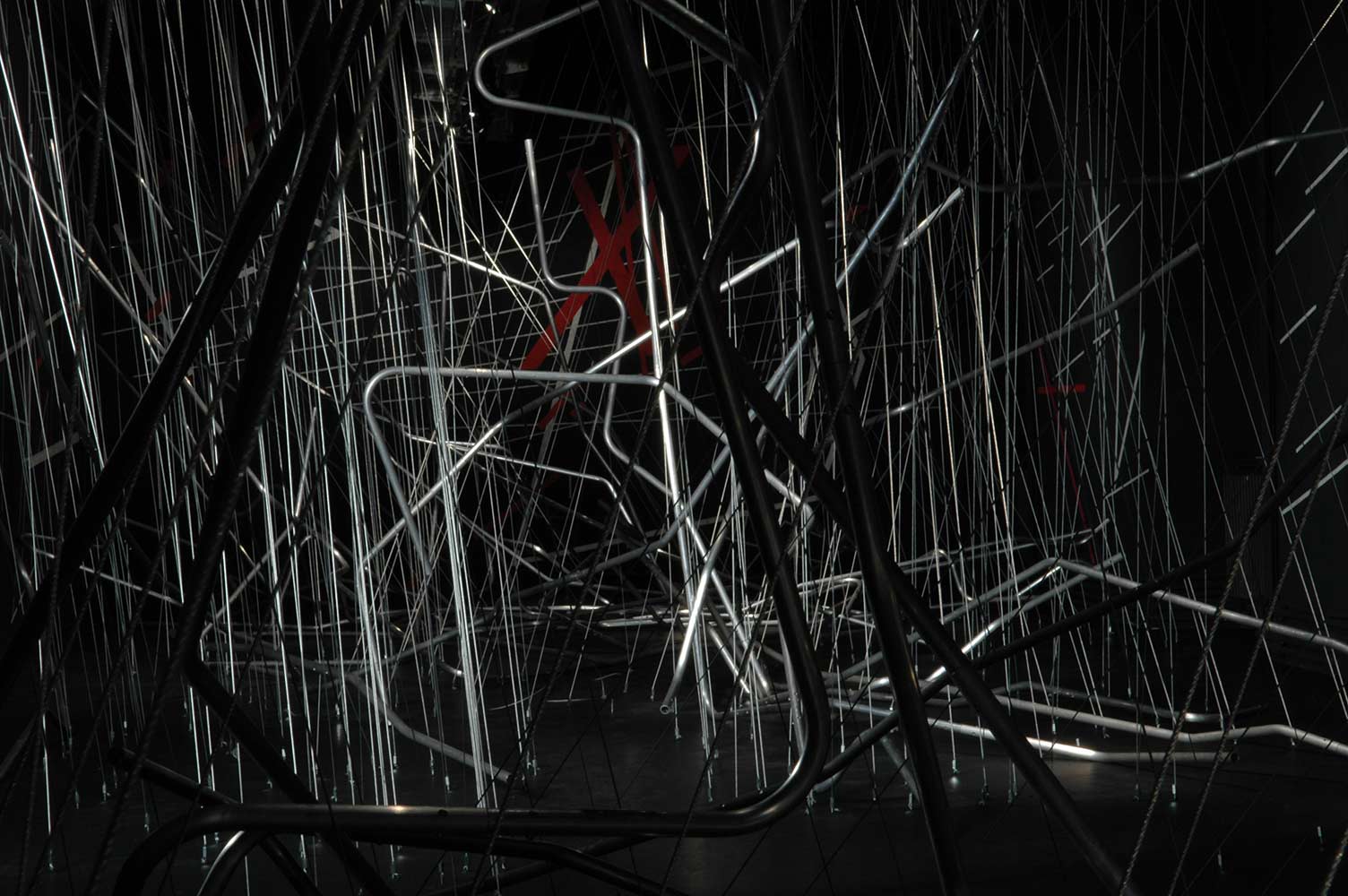


11_System Wien
Location: MAK Museum of Applied Arts, Vienna, Austria
Project Years: 2004-2005
Project Team: Christoph a. Kumpusch, Lebbeus Woods, Alfredo Barsuglia, Mias Mitteregger, Gabriel Abrantes, Gregor Holzinger
Technical Supervision: Franz Sam
Choreography: Oleg Soulimenko
Any city is comprised of many systems—economic, technological, social, cultural—which overlay and interact with one another in complex ways. Each system is different, but from one point of view all share a common purpose: The organization of energy—and a common goal—giving the cumulative energy of the city a coherent form.
According to Maxwell’s second law of thermodynamics, the entropy in a system will increase (it will lose energy) unless new energy is put in. According to Newton’s law of inertia, a system will stay at rest unless it is disturbed by an external force.
Energy exists in two states: kinetic and potential. A brick sits on top of a wall—potential (it could fall). A brick is pushed from the top of the wall—kinetic (its potential is released).
Energy takes many forms, each created by a system that contains it for a particular purpose. Architecture is one such system that contains energy by establishing stable boundaries, limits, edges. New energy—in the form of maintenance—must continually be added to the system of materials, or they will decay. Metaphysically speaking, new energy—in the form of human thought, emotion, activity—must continually be added to the system of boundaries, or they will lose their purpose and meaning.
The group of drawings, prints, models, and installations comprising the System Wien project develop an idea that the making of architecture can be understood as the organization of energy. The project explores how energy relations in public and private city spaces might be represented tectonically in the form of drawings and models; how existing energy relations in the city can be changed by the input of new energy in the form of highly temporary spatial interventions; how the future of the city need not depend for creative energy input on the development of building projects requiring large capital investments and institutional approval, but rather on the redistribution of energy at the human scale of the street and the room.
A portion of a city’s potential energy is contained in its architectural constructions. A vast quantity of mechanical energy is stored in the materials used to make buildings, the energy it took to lift them into place above the surface of the earth and its center of gravity. The distance between the materials and the earth’s surface determines the quantity of their potential energy, which can only be released when, responding to the gravitational attraction of the earth’s mass, they fall.
The larger part of the city’s potential energy is contained in its people. Each person has energy that can be activated, in thoughts and in actions, anytime in the future. In theory, just how and when this energy will be released and where it will be directed is unpredictable.


